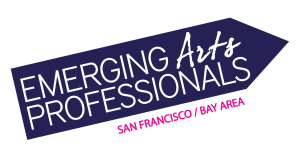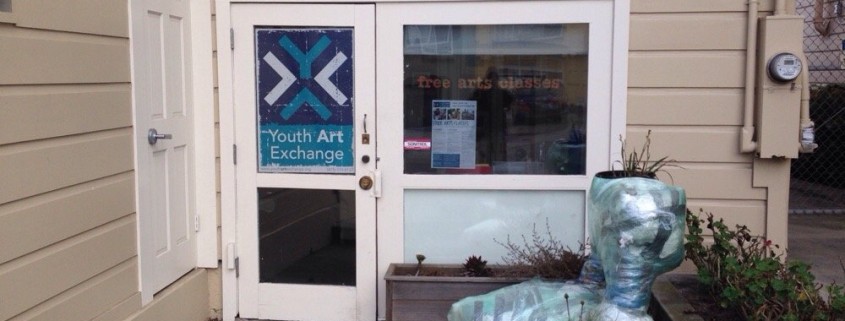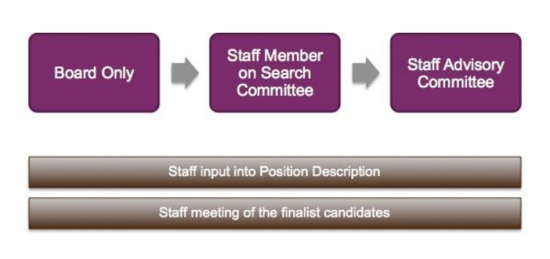How do you let go of something that you have created? For instance, that incredibly crafted scene in a story, that you love but know may not completely fit anymore; or that dynamic painting series that you treasure but you know is not your future?
In June 2000, my close friend and I concocted a youth arts center that would bring a multi-disciplinary and community engagement approach to arts education. We envisioned a place that valued teenagers and put them in charge as they worked in the arts. Thirteen years later I was able to sneak away, leaving Out of Site in the hands of its community – its staff, faculty, students and alumni – along with a new executive director.
Small to mid-size nonprofits (under about $750,000 in annual budget) particularly struggle to create a lasting institution, one that is bigger than its founder, where the organization and its members successfully hold the values, vision and mission. As a founding executive director, I rode all the ups and downs for 13 years – the joys and the challenges: from the hiring of our first staff person, to the first employee firing, to the flush financial years and the lean years with the fears of not making payroll, to the awards and accolades, to the frustrating partnerships, and to all the complexities and emotions of working in a community that values collaboration and reflection.
The founder carries plenty. How could I let go and walk away? How could I leave the organization in a healthy position and myself feeling proud, calm and grateful?
I had attended multiple succession planning workshops, but frankly there was always the assumption of a bigger institution, a stronger board, a more robust organizational structure. I’d leave these meetings overwhelmed. How could Out of Site accomplish this transition without crumbling? In the difficult moments of our history, I felt that Out of Site was merely a house of cards – beautiful but fragile, and only I could keep it together. Was there a solid structure outside of me that could hold Out of Site together?
To figure this out, I needed to personally let go. I needed to value all those ups and downs and that knowledge I had gained. And, then I had to separate. I needed to allow others to step in. For me this took the support of an executive coach as well as a clarity about my own next steps.
Also, when I decided that it was time to leave, Out of Site was in a good spot: we had just finished a strategic plan developed by board, staff, faculty and youth. We had some steady, multi-year funding. Coincidentally, we were beginning a process to change our name.
After first telling my Board Chair, I shared the news with staff and then youth. All of this was very emotional. People were mad, surprised, scared, overwhelmed and intrigued. It was the youth who were most positive and excited – they saw me jumping off into new adventures. The adults were supportive but also understandably concerned about how the transition would affect them. There were a lot of emotions to process!
The Board needed to figure out the timeline and the transition method. After hours and hours of discussion, they made the decision to hire a Transition Consultant while also giving substantial raises to the top staff, in recognition that this would be a full year. This was all a financial stretch. But the Consultant spoke of using this process as a capacity-building time. She saw transition as a time where staff and board could step up and redefine their roles and responsibilities. Everyone found this exciting.
I was peripheral to this process. It was shocking and a bit sad for me at first, but then a relief to see the strength of the underlying structure of the organization. With coaching, I saw how my absence from the process would ensure a successful hiring outcome – no new executive director wants the founder/former ED looking over her/his shoulder. Also, this was balanced by the appreciations and accolades I was receiving: I worked hard to take in all these supportive comments and conversations.
The Board, staff and I were savvy and strategic about how we spoke to our partners and funders about the transition. And once the fabulous new executive director was hired, we held a celebratory party. Informal but also ceremonial: this was the handover. I felt deeply appreciated and honored – friends, partners, funders were all there. I was able to thank everyone including board, staff, youth and partners; and, then introduce my successor. She spoke to our community as its new director.
With a background in architecture, education and policy, Beth Rubenstein is currently a Legislative Aide to Supervisor John Avalos, of District 11 in San Francisco. She works on city budget, workforce development, children and youth policy, arts policy, and District 11 community development projects. She is the co-founder and was the long-time executive director of Youth Art Exchange (formerly Out of Site Youth Arts Center), which offers programs in visual and performing arts, and leadership development to San Francisco public high school youth. She has taught at the high school and college level, including at Yale College and Rhode Island School of Design. Beth has a BA in art history from Barnard College, Columbia University, and a Masters in Architecture from Yale University.
Beth is a 2012 – 2017 Koshland Civic Unity Fellow for the Excelsior neighborhood of San Francisco, awarded by the San Francisco Foundation in recognition of being a “Bay Area grassroots risk taker” and for taking on “the most stubborn neighborhood problems as a personal challenge and [working] collaboratively to overcome them.”





